Although the idea of quantum computation was first articulated in the 19th century, quantum computers are still a novelty occupying a growing niche alongside general-purpose computers and supercomputers. Because the terminology employed for quantum computers, general-purpose computers, and supercomputers is quite similar, the differences between these three types of devices might be difficult to grasp. However, each has specific characteristics and applicability.
Supercomputers build upon the principles and functionalities of conventional computers but surpass them in terms of speed and performance. Since there is no need for consumer supercomputers, they are mostly used in scientific facilities or big institutions dealing with large amounts of data as well as complex and mathematically intensive computations. The most common applications are related to defense and national security, aerospace, weather forecasting, and automotive development, among others.
The main aspect that differentiates supercomputers from general-purpose computers is the parallel design: a massive number of central processing units (CPUs) work simultaneously to solve different parts of a problem, while the results are merged in the end. This allows for vast storage capacity, high computational rates, and very fast retrieval of data. Supercomputers use different algorithms and arithmetic principles to perform calculations, and their speed is measured in FLOPS (floating-point operations per second), as opposed to MIPS (million instructions per second) in the case of conventional consumer devices.

All-purpose 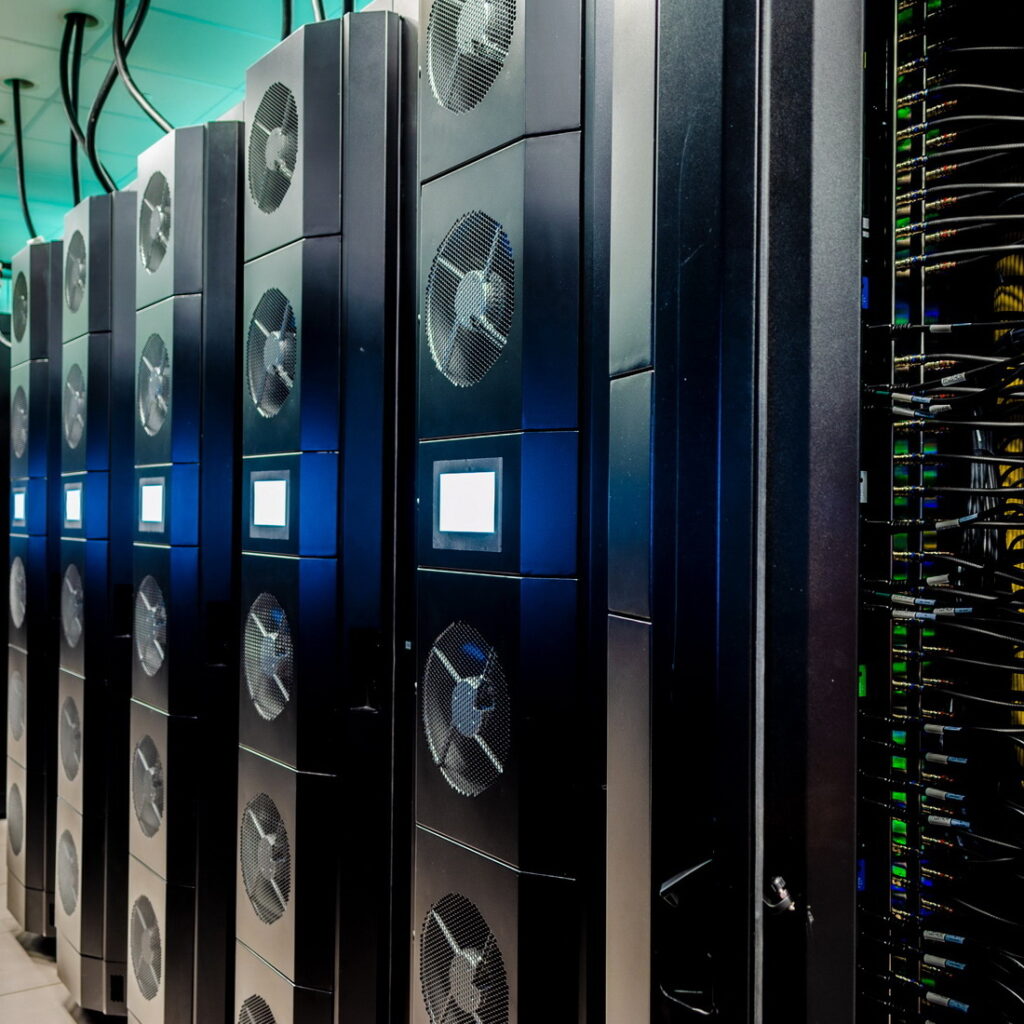
Super (Source: Intel) 
Different (Source: Intel)
However, both general-purpose devices and supercomputers are based on the principles of classical mechanics, store information in bits, and can operate at room temperature (even though supercomputers need constant cooling because of the high heat generated by the computational process).
At the other side of the spectrum, quantum computers are developed based on the laws of quantum mechanics. From the way these devices store information and the technology used to build them to the fact that they operate best at temperatures close to absolute zero – all their features and internal processes differ radically from those of their conventional counterparts. Even though the technology is not fully functional yet, it is expected that these devices will also have a specific application (e.g., breaking encryption, optimization problems in transportation and logistics, drug development, etc.). In terms of end-user, applicability, and ownership, quantum devices and supercomputers are mostly intended to be used by governments and large institutions, to be accessed via the cloud, while private ownership is only envisioned for a small number of devices.
Quantum simulators (devices that emulate quantum behavior and processes) usually run on conventional hardware or supercomputers.
Quantum versus classical computers
Quantum versus classical computers
Quantum computers are NOT a faster, better version of current conventional computers, and should not be seen as replacements for, but rather as a complement to traditional devices. Or, as Gabriel Popkin put it, “nobody thinks quantum computers will revolutionize word processing or email.”16
Quantum devices represent a fundamentally new type of computer. They make use of different components and physical structures, follow other mechanics principles, and solve specific types of problems in a way that is completely unrelated to the way conventional computers work.17
| Conventional computers | Quantum computers |
| Based on the principles of classical physics | Based on quantum-mechanical phenomena |
| Information is stored in bits and is translated into electricity | Information is stored in qubits (quantum bits). The most common technologies used to build qubits incorporate superconducting circuits, trapped ions, photons, and diamonds |
| Bits can take one of two values – 0 (low voltage) or 1 (high voltage) | Qubits are in ‘superposition’ while performing a calculation. There is no counterpart to superposition in classical physics, and there is no simple way to describe it. An approximation might be that the bit value is somewhere between 0 and 1, with a certain probability of becoming one of the two |
| Bits are not entangled (no classical analog) | Qubits can attain a state of entanglement. This is a special type of inter-connection where an action performed on one of two qubits will affect the state of the other one |
| Operate at room temperature | Currently, quantum computers need low temperatures (sometimes close to absolute zero) for the quantum behavior to manifest without disturbances from the outside |
| Performance metrics: CPU, memory usage, storage | Performance metrics: quantum volume (combination of number of qubits, connectivity between qubits and errors) |
| Good at performing complex problems with linear complexity | Not suited for problems with linear complexity. However, problems with exponential complexity can be solved in linear time |
The main advantages of quantum computers come from the use of qubits and their special properties – superposition and entanglement. A simple way of describing superposition is to say that qubits can represent 0 and 1 simultaneously, which is why they can encode a wealth of information. In computations, both possibilities — 0 and 1 — are operated on at the same time, allowing for a sort of parallel computation that speeds up solutions.18
Superposition and entanglement are the fundamental building blocks of a quantum computer. These phenomena imply another important property of these devices: Every time one qubit is added, the computing capabilities doubles.
Noise, errors and coherence time
Quantum superposition and entanglement are very fragile states that can easily be perturbed by internal or external interference. In the quantum context, such interference is referred to as “noise”. Quantum noise could consist of magnetic fields, variations in temperature, impurities in the qubit material, stray atoms or vibrations, a photon from the outside, and much more. The internal noise can be inferred from the interactions between the qubits.
Therefore, one of the most important current research areas aims to develop ways of achieving error-free computations. This could be done either by increasing the number of qubits, and having many physical qubits form one logical qubit, or through error mitigation, which involves the use of various algorithms to post-process the results and reduce the errors. Other strategies aim to achieve the same results by experimenting and testing with various types of software.
Besides reducing noise and errors, another major goal for scientists is to increase coherence time – the time that the qubits spend in superposition. Among other factors, this coherence time depends strongly on the technology used to build qubits.
Physical qubits and logical qubits
Physical qubits represent the material in which the information is encoded. They can be created using different particles such as photons, single atoms, trapped ions, and more; however, physical qubits are highly sensitive to noise. Subsequently, qubits that have undergone error correction are usually referred to as logical qubits. The number of logical qubits will generally be lower than the number of physical qubits, because more qubits are needed to perform error-correction and only few are left to perform computations in the current state. Due to an insufficient number of physical qubits and the inefficient connectivity between them, it is very difficult to create logical qubits. Some researchers even stipulate that no single logical qubit has ever been created.20
It has been estimated that in order to run Shor’s algorithm to break the RSA 2048 encryption, a quantum computer would need approximately 4,098 logical qubits.21
Quantum computing methods and the search for the 'Holy Grail'
Quantum computing methods and the search for the 'Holy Grail'
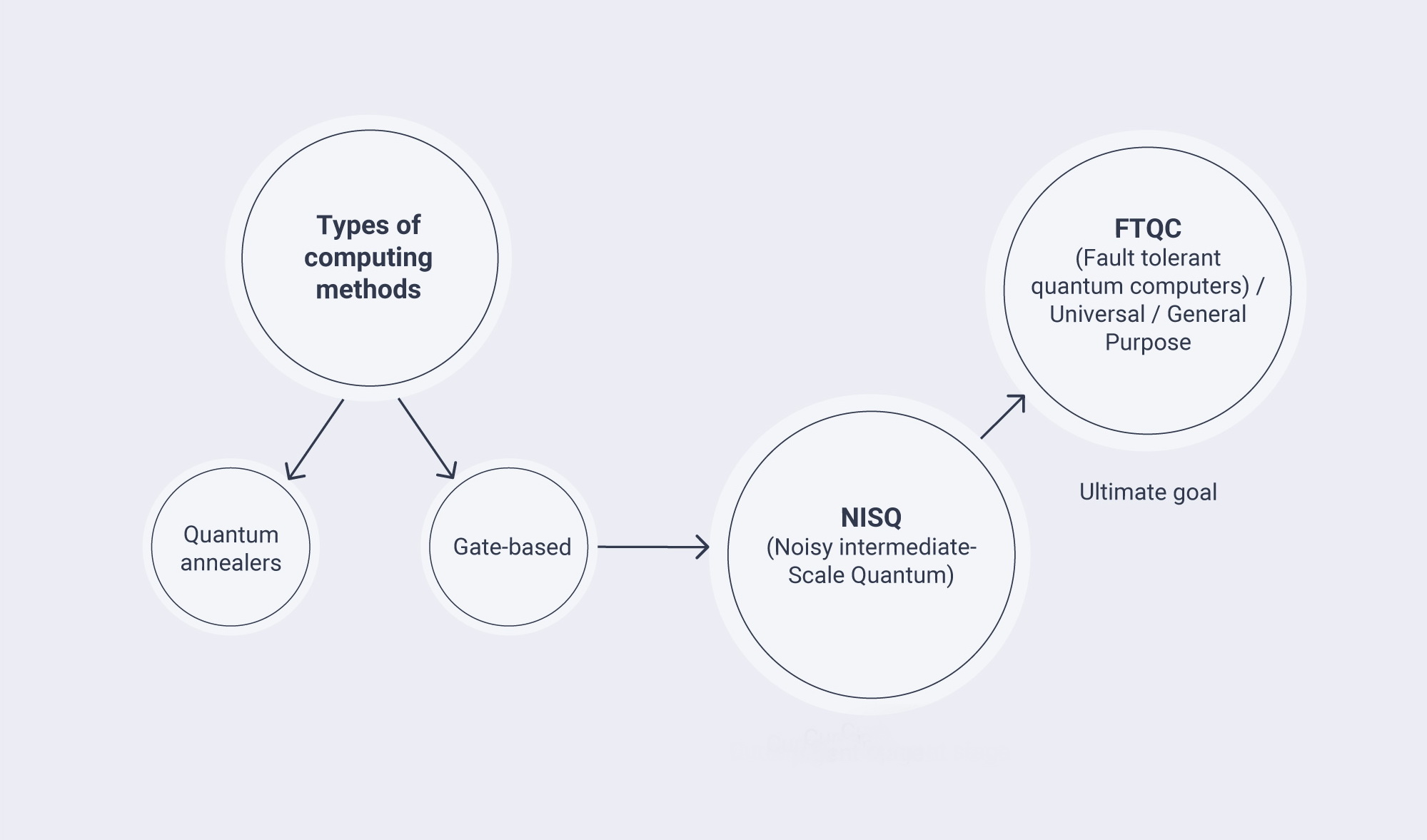
The main quantum computing methods currently used are the quantum gate model and quantum annealing. Both of them have their limitations, and there is an ongoing debate in the scientific community over whether to include quantum annealers in the quantum computing category at all. However, quantum annealers do take advantage of the quantum-physical phenomenon of “tunneling,” according to which a wave function can propagate through a barrier. Some members of the scientific community believe that these devices will not be able to achieve FTQC (Fault Tolerant Quantum Computing) status, and will therefore offer no significant advantage over conventional devices. On the other hand, annealing systems currently have a lower rate of errors and are less prone to noise than gate-based systems.
While the computational methods are different, both are at incipient stages of development, prone to errors, and lacking in robustness and fidelity.
John Preskill, one of the leading scientists in the field of quantum information science and quantum computation, has labeled the current development stage of quantum computers Noisy Intermediate-Scale Quantum (NISQ). The current number of qubits (below 100) is not enough to perform computations and error correction simultaneously. Therefore, they are still susceptible to errors and noise. However, even at this stage, it might already be possible to execute tasks that would overtax a conventional device. According to Preskill, “the 100-qubit quantum computer will not change the world right away”22 and should be regarded as a step towards more powerful quantum architectures.
The Holy Grail of the quantum computing industry is the Fault Tolerant Quantum Computer, or the Universal Quantum Computer, which is expected to fulfill all expectations in terms of performance and applications. In order to achieve such a performance, the FTQC would require millions of qubits for computations, error correction, and noise reduction.
| Quantum annealers | Gate-based | |
| Types of problems they can currently address | Limited use cases (mostly optimization problems such as traveling salesman problem) | Can address a larger typology of problems, including breaking encryption codes |
| Scalability | More scalable (D-Wave’s quantum annealer had 128 qubits in 2011 and 5640 in 2020)23 | Difficult to scale due to noise and interferences. The highest number of qubits achieved as of 2020 is 72 (Google Bristlecone) |
| Algorithms | Can’t run Shor’s algorithm (break RSA cryptography) or Grover’s algorithm (faster search) | Can run Shor’s algorithm and Grover’s algorithm |
| Sensitivities | More sensitive to connectivity issues, due to the high number of qubits | More sensitive to qubit decoherence (qubits losing their superposition) and thus more prone to errors |
| Entanglement | Qubits can only be entangled with near neighbors24 | Depending on the technology used to implement qubits, long-distance entanglement is possible (in 2017, China achieved quantum entanglement in space) |
| Qubit technology | Superconducting qubits | Different technologies employed to build qubits |
| Temperature at which they operate | Close to absolute zero | Close to absolute zero |
| Producers | D-Wave | Google, IBM, Microsoft, Honeywell, Rigetti, IonQ |
The advantage of quantum annealers is that they provide a higher number of qubits for computations. However, because only a certain typology of problems can be computed on these devices, their applicability is significantly limited. Therefore, due to their broader applications, the gate-based models are more likely to become universal quantum computers (FTQC) sometime in the distant future, if the technological hurdles are overcome.
Technologies employed to build qubits
Technologies employed to build qubits
In quantum computing, information is stored in physical qubits. Given the early stage of development of this technology, multiple research centers and companies are working to test various technologies that might be suitable for building such qubits in order to store data and perform computations. Some of these variations of qubit implementations are more advanced and show better promise, while others only exist theoretically as yet.
The criteria used to evaluate qubit technologies are the coherence time (time spent by the qubit in superposition), the number of qubits that can be entangled, the ability to achieve quick gate operations, the gate fidelity (capacity to preserve information between operations), and scalability (capacity to add more qubits while maintaining connectivity and reducing noise).25
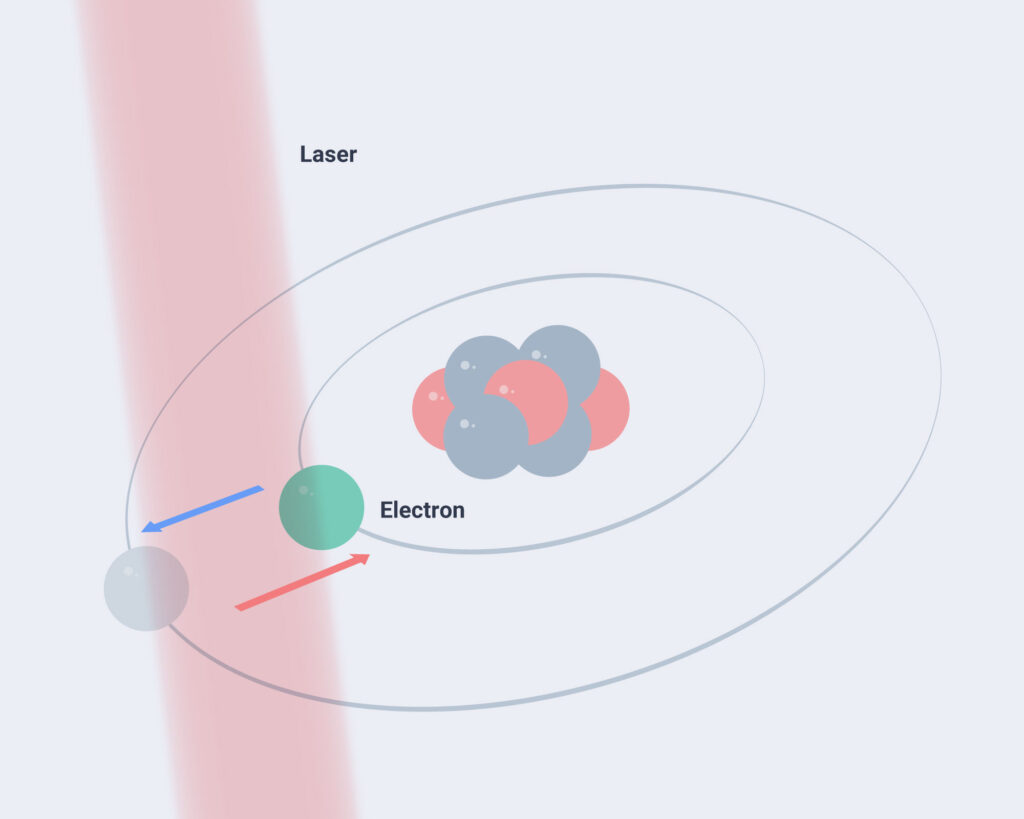
Trapped ion
- Long coherence time (over 1,000 seconds)
- All-to-all connectivity (connectivity between all qubits)
- Higher gate fidelity (which leads to a lower number of computations needed to get the result)
- Does not require extreme cooling (can operate even at room temperature, but the performance decreases)
- Considered to be slower than superconducting qubits
- Needs to be kept in high vacuum
- Requires specific know-how from multiple fields (vacuum, laser, radio frequency, etc.)
Companies using this technology: Honeywell, IonQ, Alpine Quantum Computing

Superconducting
- Makes use of proven advancements in the semiconductor industry
- Fast operation time
- Difficulties in maintaining qubit coherence (therefore more qubits are necessary to correct the errors)
- Qubits can interact only with other qubits in their proximity and need individual calibration
- Operates only at temperatures close to absolute zero
Companies using this technology: Google, IBM, Quantum Circuits, Oxford Quantum Circuits, Alibaba, Intel, Rigetti
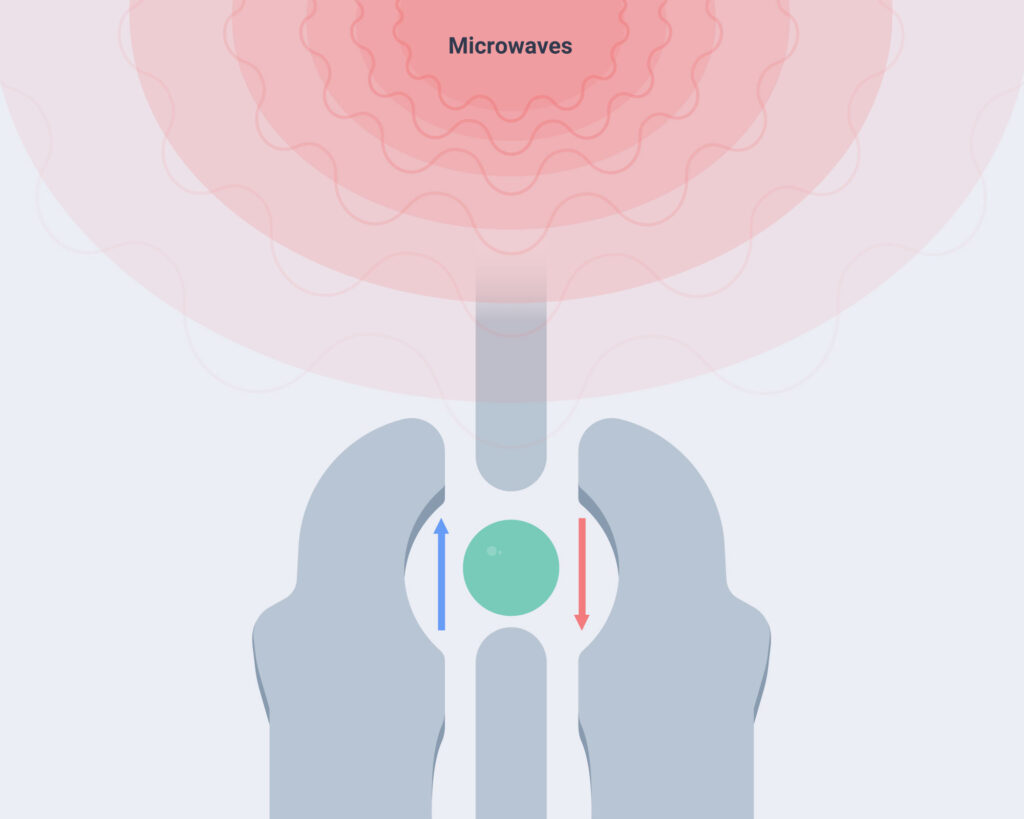
Silicon
- Makes use of proven advancements in the semiconductor industry
- Higher stability
- Difficulties with entanglement between qubits
- Difficulties integrating the electronics and qubits in a functional chip26
- Still in an emerging phase
- Should provide better coherence times as superconducting technology improves
Companies using this technology: Intel, Silicon Quantum Computing

Diamond
- Can operate at room temperature
- Good coherence time
- Difficult to entangle
- Uses laser technology
Companies using this technology: Quantum Diamond Technologies
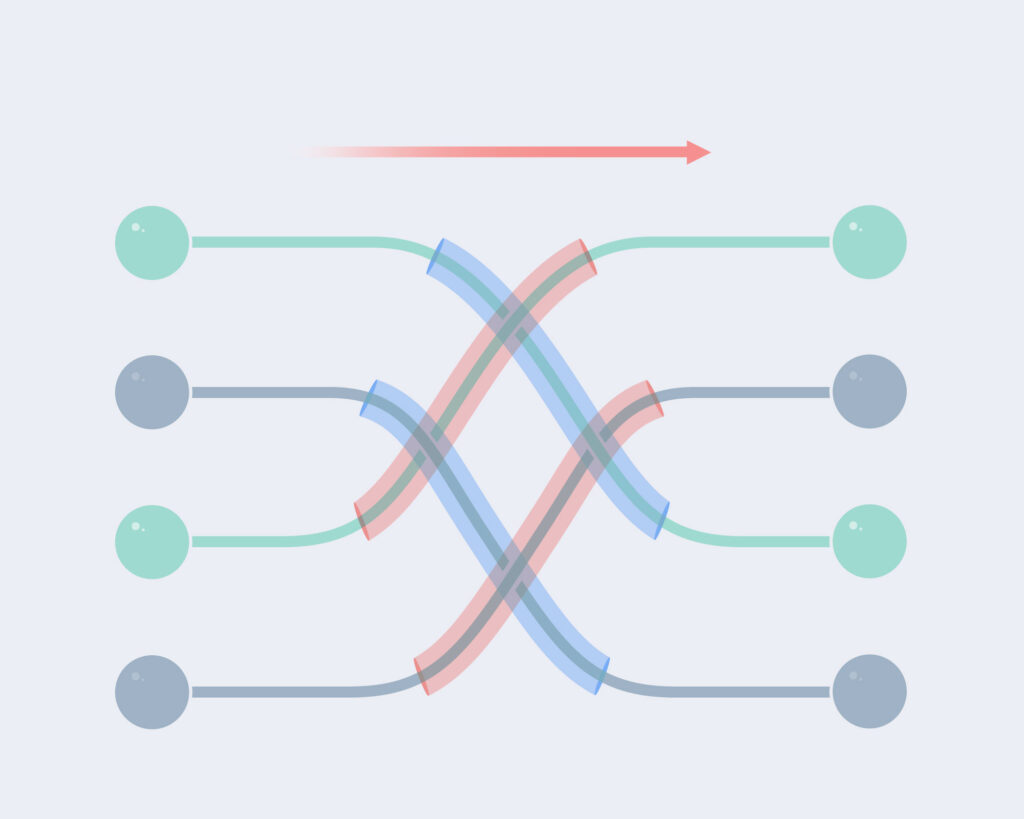
Topological
- In research phase, has not been implemented yet
- Theoretically proven to generate less errors compared to other technologies and to have higher coherence times
Companies using this technology: Microsoft, Bell labs
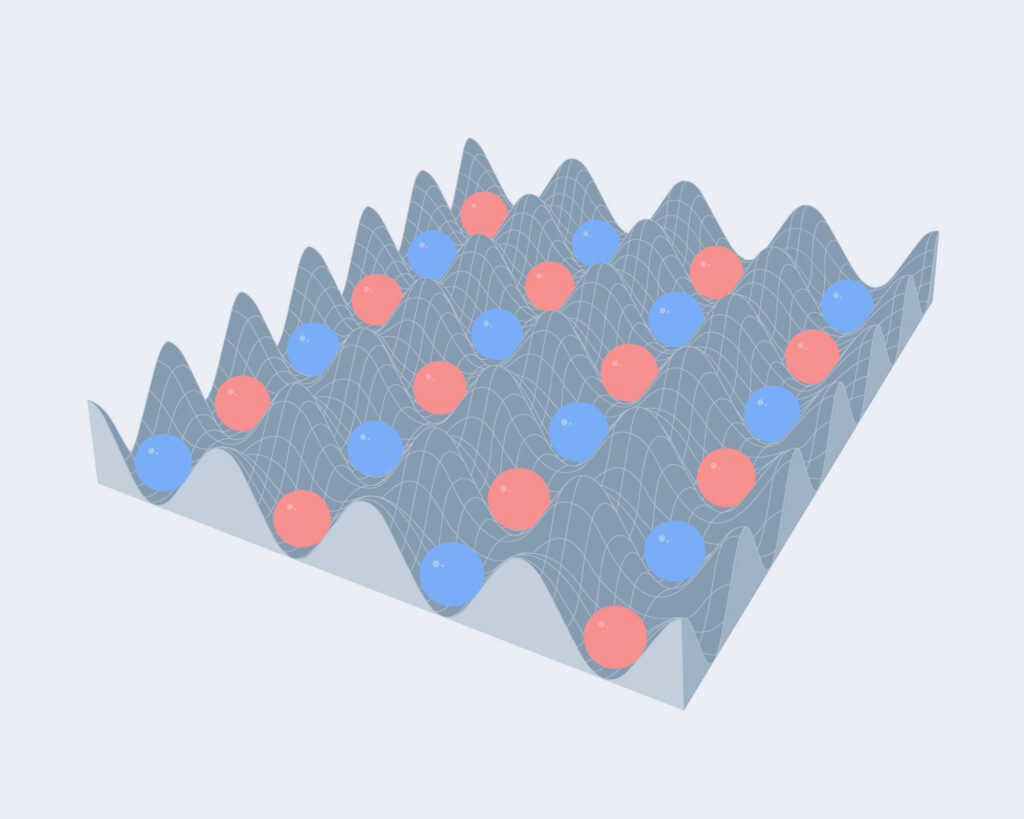
Neutral atoms
- High scalability and connectivity27
- Slow gate speeds compared to superconducting or photonic
- Does not require extreme cooling (uses laser cooling)
- Coherence time over 10 seconds
- Requires ultra-high vacuum
- Scaling-up techniques have not been explored yet
Companies using this technology: PASQUAL, QuEra, ColdQuanta, Atom Computing
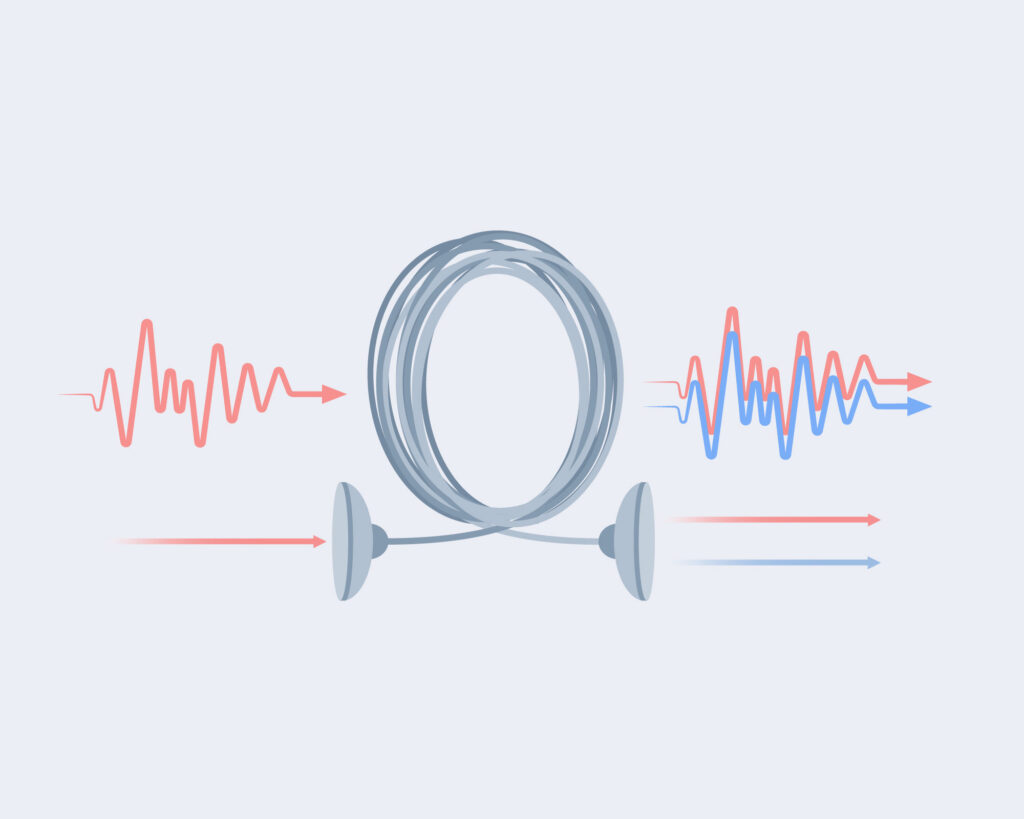
Photons
- Does not require extreme cooling
- Higher potential for scalability because it uses elements from the semiconductor industry
- Technology is in incipient stage, and not enough performance data is available
Companies using this technology: Xanadu, PsiQuantum.
Justin Ging, Supertrends expert and Chief Commercial Officer for Honeywell Quantum Solutions, discusses the advantages of ion trapped technology: “Because our qubits are quantum states within ytterbium ions, we focus on control of the quantum information rather than defects present in manufactured qubits. Our qubits are inherently stable – we’re able to maintain extremely long T1 & T2 coherence times. These coherence times are extremely important for executing the deep circuits required for complex problems. The ability to have all-to-all connectivity is a tremendous driver of quantum capability. Since all our qubits can talk to each other, we’re able to reduce the number of hand-offs / transfers needed to entangle two specific qubits and thereby shrink the overall size of the end circuit. It also has the added benefit of limiting additional sources of error.
Our gate operations require us to manipulate individual atoms with lasers and magnetic fields on a microsecond timescale. The longer computation times and much longer coherence times allow for qubits to remain in an entangled state when we measure other qubits for mid-circuit classical computations and feedback of the system. Users of our systems have commented that fewer computations are needed because of the high-fidelity operations.”
Given the fact that all technologies necessary to build qubits still need improvements (ion trap, superconducting), upscaling (silicon), or need to be developed from theoretical modeling into practical applications (topological), it is hard to appreciate at this stage which one will be the most successful. Moreover, the possibility of a hybrid device that uses multiple technologies is also envisioned.
Software and algorithms
Software and algorithms
The field of quantum computing cannot simply build upon the competencies and knowledge derived from classical computing. Quantum computers need special software and special algorithms in order to perform the desired computations.
Quantum software development kits (QSDK) are collections of tools that allow users to create and manipulate quantum programs. At the same time, they can also be used on classical devices to simulate quantum programs. Many of these are Python-based, while a few are inspired by other high-level languages.
All major full-stack quantum computer providers have already developed their own open-source software and made it available for theoreticians, computer scientists, and software developers for experimentation. Besides extending the pool of specialists who are familiar with a specific quantum computer, the producers also hope that by giving access to hardware and software tools, they will encourage industry representatives to try out various problems and come up with specific applications for their particular industry.
| Company | Software |
| IBM | QISKit (Quantum Information Software Kit) |
| Rigetti | Forest |
| Cirq | |
| Alibaba | Aliyun |
| Microsoft | Quantum Development Kit |
| D-Wave | Leap, Ocean |
| QuTech | Quantum Inspire |
| Xanadu | Strawberry Fields and Blackbird |
Besides the proprietary software offered by quantum computer producers, there are also multiple organizations and research centers collaborating with hardware providers to develop their own quantum software ecosystem (e.g., Q-CTRL, Zapata Computing, etc.)
However, migrating from one software environment to another would require additional work and know-how, especially in the current stage when people are experimenting with different technologies and devices. A company willing to try multiple quantum computers and technologies would need to adapt to the software platform offered by the quantum device provider, which would lead to higher costs in terms of time and human resources.
This gap is being closed by software companies that develop quantum development platforms, enabling clients and partners to use their software on different quantum devices and work across multiple platforms.
Denise Ruffner, Supertrends expert and former Chief Business Officer at Cambridge Quantum Computing (CQC) mentions that the CQC platform (t|ket⟩™ not only allows clients to “translate” their software into the one supported by the quantum computer they want to access, it also optimizes the algorithms, reducing their lengths and duration.
Most algorithms have been developed on a theoretical level over several years. However, the vast majority of these can only be applied to fault-tolerant quantum computers, which are not yet available at this time. Therefore, algorithms have to be adjusted to the constraints imposed by the NISQ devices (limited number of qubits, limited connectivity, noise, etc.).
Intensive research is also aimed at developing specific programming languages for quantum computers. Quantum Computation Language (QCL) was the first one to be implemented30, with a syntax based on C programming languages. Other notable attempts are: Q|SI⟩ (developed by Shusen Liu et al.)31, Silq (developed by ETH Zurich), and Q# (QSharp) (developed by Microsoft as part of their Quantum Development Kit).
Benchmarking
Benchmarking
With so many different technologies employed to build qubits and to develop quantum computers, device performance becomes difficult to measure. For some time, the quantum race has been aimed at achieving scalability and the capacity to build more qubits. However, the number of qubits alone cannot be a valid indicator of computer’s capabilities. Factors such as the connectivity between the qubits, their coherence time, entanglement, noise, and errors also considerably influence the overall performance.
In 2019, IBM introduced the concept of quantum volume, together with a protocol for measuring it on current devices.32 Quantum volume is represented numerically, with higher numbers representing higher computational efficiency.
As an indicator of how well a quantum computer can run a complex algorithm, IBM’s quantum volume takes into consideration the number of qubits, the number of operations that can be performed before decoherence occurs, error rates (how often the computer returns the wrong answer), and the level of connectivity between qubits.
| Quantum device | Type of quantum computer | Technology used to build qubits | Number of qubits end of 2020 | Roadmap |
| IBM | Gate-based | Superconducting | 53 | 1,000-plus qubit device by the end of 2023 |
| Honeywell | Gate-based | Trapped ion | 10 | |
| Intel | Gate-based | Superconducting Silicon spin | 49 | |
| Google Bristlecone | Gate-based | Superconducting | 72 | |
| Rigetti | Gate-based | Superconducting | 32 | |
| IonQ | Gate-based | Trapped ion | 32 | Double the number of qubits every year |
| D-Wave | Annealing | Superconducting | 5,000* | |
| Alibaba | Gate-based Simulator | Superconducting | 11 32 | Quantum computing prototypes of 50-100 qubits by 203033 |
| Xanadu | Gate-based | Photons | 24 | Double the number of qubits every six months |
In terms of quantum volume, only Honeywell and IBM have publicly declared the results of their measurements: in June 2020, Honeywell announced that it had reached a quantum volume of 64 on a 6-qubit quantum device.
In August 2020, IBM announced a similar achievement on a 27-qubit system34, and by October 2020, Honeywell had already advanced to a quantum volume of 128 (the exact specifications of the quantum device were not publicly disclosed).
Justin Ging, Supertrends expert and Chief Commercial Officer for Honeywell Quantum Solutions mentioned that when Honeywell achieved the quantum volume of 64, the company set itself the target of increasing its quantum volume tenfold every year for the next five years. To realize that goal, Honeywell focuses on improving gate fidelities and on scaling the number of operational qubits. Another unique advantage of Honeywell’s quantum device is the quantum charge-coupled device system architecture, which allows every additional qubit to double the system’s quantum volume.
However, even though quantum volume has been generally accepted by the scientific community as a viable metric for the efficiency of a quantum computer, it has not been generally adopted yet. Other scientists believe that the benchmark should be a quantum computer’s ability to outperform a conventional device in solving a real-world problem. Scott Aaronson has argued in favor of transparency and full disclosure of the main specifications: number of qubits, coherence times, connectivity, gate fidelity, depth of circuit, resources needed by classical algorithms to simulate the system, drawbacks, and factors that prevent scalability.35 In his opinion, summarizing all these factors in a single number remains a challenge. As of yet, nobody has succeeded in coming up with a widely accepted metric for advancements and a benchmark in the field of quantum computing.
Quantum supremacy and quantum advantage
Quantum supremacy and quantum advantage
Currently, the ultimate goals of companies active in the quantum sector are to achieve quantum supremacy and quantum advantage. Although these concepts are used interchangeably, there is an important difference between them. Quantum supremacy refers to the capacity of quantum computers to outperform classical computers in carrying out certain types of calculations.
In 2019, Google claimed that it had achieved quantum supremacy on a 54-qubit superconducting quantum device.36 The task consisted of performing a random sampling calculation (verify that a set of numbers is randomly distributed). Google’s Sycamore quantum device performed this task in 3 minutes and 20 seconds, claiming that a conventional device would have needed 10,000 years for the same computation.
This claim was later challenged by IBM, which showed that the same operation could have been performed by its supercomputer in 2.5 days and with greater fidelity.37 However, this does not change the fact that Google achieved an important milestone by performing a calculation on a quantum computer that cannot be replicated on a conventional (super)computer in a comparable timeframe.
In a move anticipated by many analysts,38 the Chinese Academy of Science announced in December 2020 that one of its team of researchers had also achieved quantum supremacy. The breakthrough is considered to surpass Google’s record by a factor of at least 250,000.39 The announcement claimed that a supercomputer would need 2.5 billion years to produce the same results as the Chinese quantum computer achieved in just three minutes. However, much like with Google’s supremacy experiment, the problem they approached is a theoretical one, with no real-world applicability.
Quantum advantage is considered to be achieved when a quantum computer solves a problem that has direct practical applicability and can be successfully used by other industries to improve their products and services. The vast majority of scientists in the field consider this to be the most important benchmark and the end-goal of the research and development projects.
What Google achieved has been widely recognized and accepted by both competitors and the industry in general as meeting the criteria for quantum supremacy, but it is important to stress that the problem solved by Google had been constructed for this exact purpose, and had no practical application. Hence, Google certainly did achieve supremacy, but not quantum advantage.
References
[15] Honeywell, Transforming Life Sciences with Quantum Computing.
[16] Gabriel Popkin, “Quest for Qubits,” Science 354, no. 6316 (December 2, 2016): 1090–93, https://doi.org/10.1126/science.354.6316.1090.
[17] GOTO 2019 • Quantum Computing • Jessica Pointing, 2019, https://www.youtube.com/watch?v=d2pGGNQ63GQ.
[18] Emily Conover, “Quantum Computers Are about to Get Real,” Science News, June 29, 2017, https://www.sciencenews.org/article/quantum-computers-are-about-get-real.
[19] Popkin, “Quest for Qubits,” 1090–93.
[20] Sevilla and Riedel, “Forecasting Timelines of Quantum Computing.”
[21] Sevilla and Riedel, “Forecasting Timelines of Quantum Computing”.
[22] John Preskill, “Quantum Computing in the NISQ Era and Beyond,” Quantum 2 (August 6, 2018): 79, https://doi.org/10.22331/q-2018-08-06-79.
[23] “TechRepublic: D-Wave Announces 5,000-Qubit Fifth Generation Quantum Annealer | D-Wave Systems,” accessed October 23, 2020, https://www.dwavesys.com/media-coverage/techrepublic-d-wave-announces-5000-qubit-fifth-generation-quantum-annealer.
[24] Popkin, “Quest for Qubits,” 1090–93.
[25] Quantum Analyst, “TQD Exclusive: A Detailed Review of Qubit Implementations for Quantum Computing,” The Quantum Daily, May 21, 2020, https://thequantumdaily.com/2020/05/21/tqd-exclusive-a-detailed-review-of-qubit-implementations-for-quantum-computing/.
[26] Fernando Gonzalez-Zalba, “Manufacturing Silicon Qubits at Scale,” Physics World, November 12, 2019, https://physicsworld.com/a/manufacturing-silicon-qubits-at-scale/.
[27] David Shaw, “Neutral Atoms,” Fact Based Insight, July 21, 2020, https://www.factbasedinsight.com/neutral-atoms/.
[28] Gabriel Popkin, 2016, “Scientists Are Close to Building a Quantum Computer That Can Beat a Conventional One,” Science (blog), December 1, 2016, https://www.sciencemag.org/news/2016/12/scientists-are-close-building-quantum-computer-can-beat-conventional-one.
[29] Mingsheng Ying and Yuan Feng, “A Flowchart Language for Quantum Programming,” IEEE Transactions on Software Engineering; New York 37, no. 4 (August 2011): 466–85, http://dx.doi.org/10.1109/TSE.2010.94.
[30] “QCL - A Programming Language for Quantum Computers,” accessed October 25, 2020, http://tph.tuwien.ac.at/~oemer/qcl.html.
[31] Shusen Liu et al., “Q|SI: A Quantum Programming Environment,” ArXiv:1710.09500 [Quant-Ph], October 25, 2017, http://arxiv.org/abs/1710.09500.
[32] Andrew W. Cross et al., “Validating Quantum Computers Using Randomized Model Circuits,” Physical Review A 100, no. 3 (September 20, 2019): 032328, https://doi.org/10.1103/PhysRevA.100.032328.
[33] “Inside Quantum Technology,” Inside Quantum Technology, accessed October 28, 2020, https://www.insidequantumtechnology.com/.
[34] “IBM Delivers Its Highest Quantum Volume to Date, Expanding the Computational Power of Its IBM Cloud-Accessible Quantum Computers,” IBM News Room, September 23, 2020, https://newsroom.ibm.com/2020-08-20-IBM-Delivers-Its-Highest-Quantum-Volume-to-Date-Expanding-the-Computational-Power-of-its-IBM-Cloud-Accessible-Quantum-Computers.
[35] Scott Aaronson, “Turn down the Quantum Volume,” Shtetl-Optimized (blog), accessed October 29, 2020, https://www.scottaaronson.com/blog/?p=4649.
[36] Frank Arute et al., “Quantum Supremacy Using a Programmable Superconducting Processor,” Nature 574, no. 7779 (October 2019): 505–10, https://doi.org/10.1038/s41586-019-1666-5.
[37] Edwin Pednault et al., “On ‘Quantum Supremacy,’” IBM Research Blog, October 21, 2019, https://www.ibm.com/blogs/research/2019/10/on-quantum-supremacy/.
[38] “Quick View: Quantum Computing To Have The Biggest Tech Impact, If It Really Exists,” accessed October 21, 2020, https://bmo-bmiresearch-com.proxy.lib.strath.ac.uk/article/view?article=1499768&page=undefined.
[39] Andre Saraiva, “Chinese Quantum Computer Beats Google’s Supremacy Experiment,” Quantum Computing Report (blog), December 5, 2020, https://quantumcomputingreport.com/chinese-quantum-computer-beats-googles-supremacy-experiment/.
